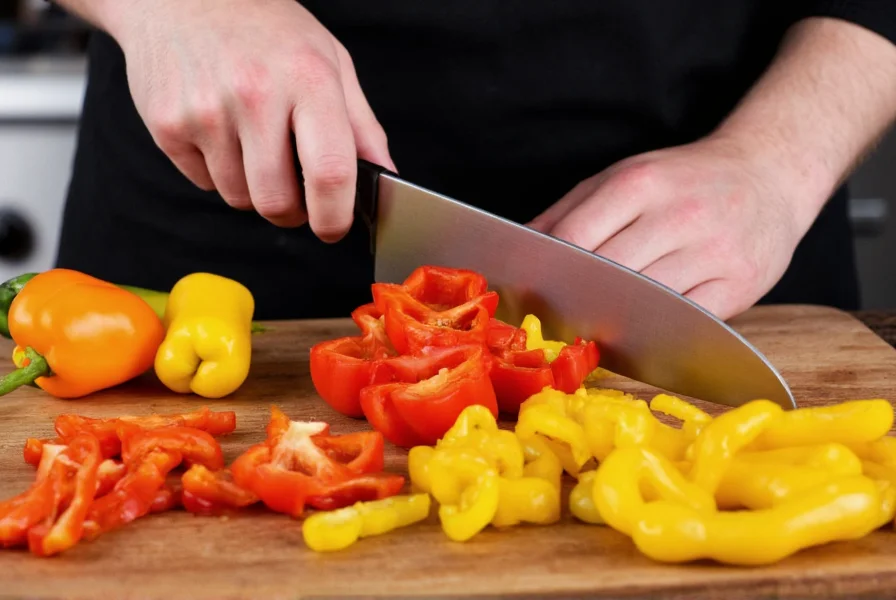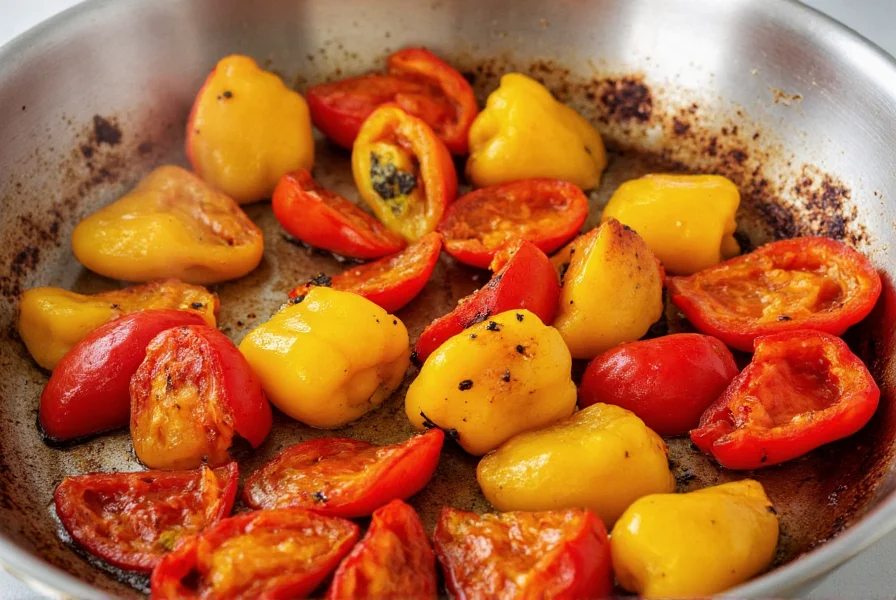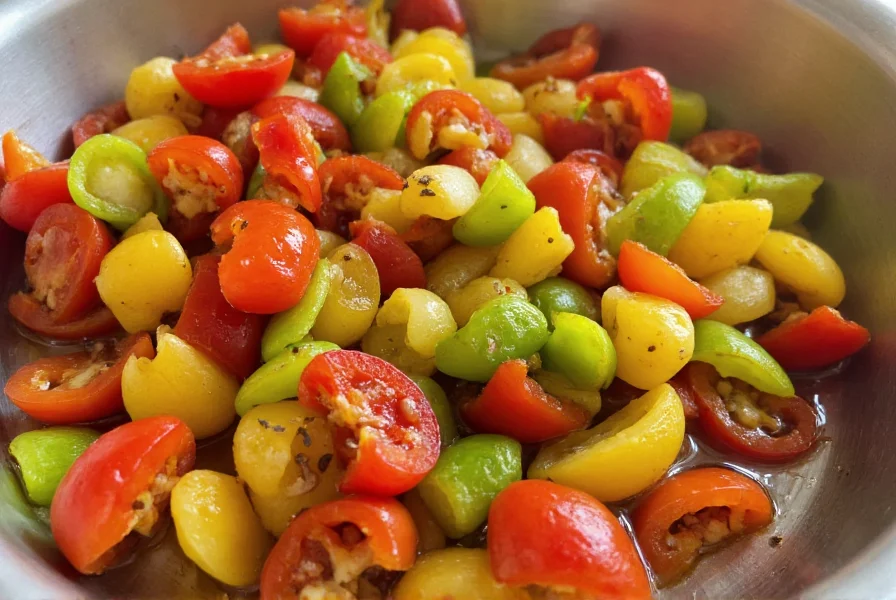The best peppers for sautéing are bell peppers, poblano peppers, and shishito peppers. These varieties maintain their texture while developing rich, caramelized flavors when cooked over medium-high heat with olive oil for 5-8 minutes. Avoid overcooking to preserve their vibrant color and slight crunch.
Mastering the art of pepper sauté can transform simple ingredients into culinary masterpieces. Whether you're preparing a quick weeknight dinner or elevating a gourmet dish, properly sautéed peppers add depth, color, and flavor to countless recipes. This guide reveals professional techniques that home cooks can easily implement for consistently perfect results.
Understanding Pepper Varieties for Sautéing
Not all peppers respond the same way to high-heat cooking. Choosing the right variety makes a significant difference in your final dish.
| Pepper Type | Sauté Time | Flavor Profile | Best Cooking Applications |
|---|---|---|---|
| Bell Peppers (all colors) | 6-8 minutes | Sweet, vegetal | Stir-fries, fajitas, pasta dishes |
| Poblano Peppers | 5-7 minutes | Mild heat, earthy | Chiles rellenos, scrambled eggs, sauces |
| Shishito Peppers | 3-5 minutes | Mostly mild with occasional heat | Appetizers, tapas, simple side dishes |
| Jalapeño Peppers | 4-6 minutes | Spicy, grassy | Salsas, nacho toppings, spicy stir-fries |
When selecting peppers for sautéing, look for firm specimens with taut, shiny skin. Avoid peppers with wrinkles, soft spots, or discoloration, as these indicate age and will not perform well under high heat. Different colored bell peppers offer varying sweetness levels—red and yellow peppers contain more natural sugars than green varieties, resulting in better caramelization.

Step-by-Step Perfect Pepper Sauté Technique
Follow these professional steps to achieve restaurant-quality sautéed peppers at home:
- Preparation: Slice peppers into uniform 1/4-inch strips. Consistent sizing ensures even cooking. Remove seeds and membranes for milder flavor.
- Heat Control: Preheat your skillet over medium-high heat for 2-3 minutes. The ideal temperature is 350-375°F (175-190°C).
- Oil Selection: Use 1-2 tablespoons of high smoke point oil like avocado oil or light olive oil. Avoid extra virgin olive oil for high-heat cooking.
- Cooking Process: Add peppers in a single layer without overcrowding. Let them sit undisturbed for 2 minutes to develop fond (those delicious browned bits).
- Stirring Technique: Flip or stir peppers every 2 minutes using a metal spatula. Avoid constant stirring which steams rather than sautés.
- Seasoning Timing: Add salt after 3 minutes of cooking to prevent excess moisture release. Finish with acid (lemon juice or vinegar) in the last minute.
- Deglazing: For maximum flavor, deglaze the pan with a splash of broth or wine after removing peppers to capture the fond.
Avoiding Common Pepper Sauté Mistakes
Even experienced cooks make these frequent errors when sautéing peppers:
- Overcrowding the pan: This lowers the pan temperature dramatically, causing peppers to steam rather than sauté. Cook in batches if necessary.
- Using wet peppers: Always dry peppers thoroughly after washing. Water causes oil to splatter and prevents proper browning.
- Adding salt too early: Salt draws out moisture, creating steam that inhibits caramelization. Wait until peppers have developed some color.
- Using low smoke point oils: Butter or extra virgin olive oil will burn at proper sauté temperatures. Choose appropriate cooking fats.
- Overcooking: Peppers should retain some crispness. They continue cooking from residual heat after removal from the pan.

Flavor Pairing Combinations for Sautéed Peppers
Elevate your sautéed peppers with these professional pairing suggestions:
- Garlic and herbs: Add minced garlic in the last 2 minutes of cooking with fresh thyme or oregano
- Onion foundation: Start with 1/4 inch diced onions, cooking until translucent before adding peppers
- Acid balance: Finish with balsamic vinegar for sweet peppers or lime juice for spicy varieties
- Umami boost: Add a teaspoon of soy sauce or fish sauce during the final minute of cooking
- Cheese pairing: Top with crumbled feta or queso fresco after cooking for Mediterranean or Mexican dishes
Practical Applications and Recipe Ideas
Sautéed peppers serve as versatile components in numerous dishes. Try these creative applications:
- Breakfast perfection: Combine with scrambled eggs, onions, and cheese for a classic pepper and egg skillet
- Pasta enhancement: Toss with cooked pasta, olive oil, and Parmesan for a quick primavera
- Burrito building: Use as a foundational layer in breakfast burritos with black beans and scrambled eggs
- Pizza topping: Pre-cook peppers before adding to pizza to prevent excess moisture on the finished pie
- Grain bowl base: Layer over quinoa or rice with protein and greens for a complete meal
For meal prep enthusiasts, sautéed peppers maintain quality when stored properly. Cool completely, then transfer to airtight containers. They'll keep for 4-5 days in the refrigerator or up to 3 months in the freezer. When reheating, use a skillet rather than a microwave to preserve texture.
Frequently Asked Questions
Can I sauté frozen peppers directly from the freezer?
While possible, frozen peppers release significant moisture when cooked, resulting in steamed rather than sautéed texture. For best results, thaw frozen peppers completely and pat dry before cooking. This prevents excess water from lowering the pan temperature and inhibiting proper caramelization.
Why do my sautéed peppers turn out soggy instead of crisp-tender?
Soggy peppers typically result from overcrowding the pan, which lowers the cooking temperature and causes steaming instead of sautéing. Another common cause is adding salt too early, which draws out moisture. Ensure your pan is properly preheated, don't overcrowd, and add salt after the peppers have developed some color for optimal texture.
What's the difference between sautéing and stir-frying peppers?
Sautéing uses medium-high heat with a small amount of oil in a wide skillet, allowing peppers to develop fond (browned bits) as they cook. Stir-frying uses higher heat with constant motion in a wok, creating more uniform cooking but less caramelization. Sautéing better preserves pepper texture while stir-frying produces more uniform doneness throughout.
How can I reduce the heat level of spicy peppers when sautéing?
To reduce heat in spicy peppers, remove all seeds and white membranes (placenta) which contain most capsaicin. Soaking sliced peppers in cold salted water for 15-20 minutes before cooking can also draw out some heat compounds. Adding sweet elements like honey or caramelized onions during cooking helps balance the heat perception.
Can I use cast iron for sautéing peppers?
Yes, cast iron works exceptionally well for sautéing peppers due to its excellent heat retention. Preheat your cast iron skillet thoroughly before adding oil and peppers. The even heat distribution promotes consistent caramelization. Just be mindful that cast iron continues cooking after removal from heat, so remove peppers slightly before they reach your desired doneness.











 浙公网安备
33010002000092号
浙公网安备
33010002000092号 浙B2-20120091-4
浙B2-20120091-4